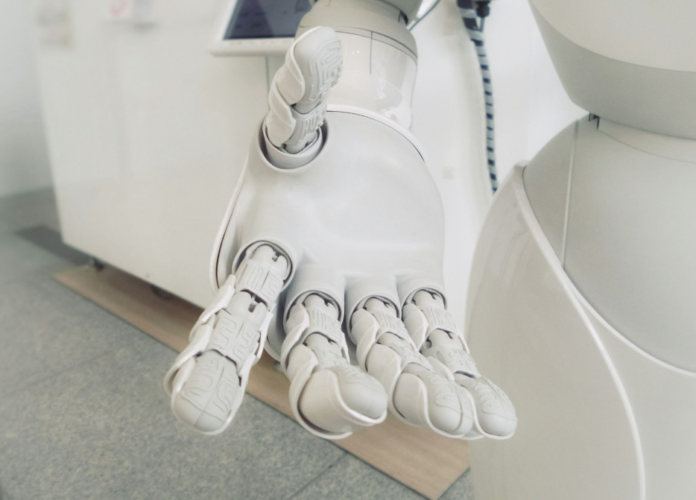Entrepreneurs… Bend the rules!#entrepreneurship #businessmindset #entrepreneur

They really are no new big ideas…#Entrepreneur #entrepreneurship #entrepreneurlife

Entrepreneurship in under 30 seconds… Thank you for the email! That was challenging but here`s your answer and I hope you like it!#entrepreneurship #entrepreneurlife #entrepreneur

ChatGPT and Claude jump the damn shark… They`re on TV now…#entrepreneur #entreprenuerlife #entrepreneurship

What should you do when your top producing salesman is wrecking havoc on your entire salesforce?#entrepreneurship #entrepreneurlife #entrepreneur

Are we all screwed with AI? If you listen to the long format interviews of CEOs running AI, they sound confused, and uncertain. #entrepreneur #entrepreneurship #entrepreneurlife

What it will AI punish you? It will if you`re unprepared #entrepreneur #entrepreneurship #entrepreneurmindset

Will you lose your job to AI?#entrepreneurship #entrepreneur #entreprenuerlife

Artificial intelligence (AI) is transforming the way businesses operate, streamlining processes that once required extensive manual effort.
From AI-powered chatbots handling customer inquiries to automated marketing campaigns delivering personalized messages, businesses are finding new ways to increase efficiency while reducing costs.
But with this shift toward automation comes a significant challenge: maintaining the human connection that customers expect and appreciate. No one enjoys feeling like they’re interacting with a faceless machine, and a purely robotic approach can lead to disengagement and lost loyalty.
The key is to leverage AI strategically—using it to enhance, rather than replace, human interaction.
Smart Automation Enhances Customer Experience
AI excels at taking over repetitive, time-consuming tasks, allowing businesses to provide faster, more efficient service while freeing up employees to focus on more complex customer needs.
Automated appointment scheduling, real-time order tracking, and AI-powered chat support can create smoother interactions, reducing friction in the customer experience.
Retailers, for example, use AI to analyze shopping patterns and offer personalized recommendations, making online shopping more intuitive and enjoyable.
Some businesses also focus on improving convenience for customers with AI-driven solutions, such as offering personalized accessories like stylish and protective AirPod Pro cases based on individual preferences.
By automating processes that don’t require emotional intelligence, businesses can improve service without removing the personal touch.
Personalization at Scale
One of AI’s most powerful advantages is its ability to deliver personalized experiences at scale.
Where human teams would struggle to provide tailored interactions to thousands of customers, AI makes it seamless. AI-driven analytics process customer data to send targeted emails, personalized product suggestions, and customized promotions.
For example, chatbots equipped with natural language processing can recognize returning customers and adjust their responses based on previous interactions.
By integrating AI into customer relationship management systems, businesses can ensure that even automated interactions feel personalized. This level of customization fosters stronger customer relationships and a sense of being valued, even when no human is directly involved.
Human Oversight Is Essential
While AI is fast and efficient, it lacks emotional intelligence. A chatbot may provide technically correct answers but fail to detect customer frustration or nuanced concerns. That’s why human oversight remains crucial in AI-driven interactions.
Businesses should implement a hybrid approach, combining AI efficiency with human empathy. Live chat options should always be available for customers needing a real person to resolve their issues. AI-driven sentiment analysis can help identify when customers are becoming frustrated, prompting a human representative to step in.
Clear escalation protocols ensure that when automation falls short, a human is there to bridge the gap.
Maintaining Your Brand’s Voice
One of the biggest pitfalls of AI automation is the risk of losing brand identity. Automated responses, whether in emails, chatbots, or social media interactions, must align with a company’s unique voice and personality.
Generic, robotic messaging can weaken a brand’s presence, making interactions feel impersonal. Businesses should train AI models with brand-specific language and guidelines, ensuring that all communication—whether human or automated—feels consistent and authentic.
When AI-generated responses reflect a company’s values and tone, customers remain engaged and connected to the brand.
Choosing the Right AI Tools
Not all AI solutions are created equal, and choosing the right tools is essential to striking the balance between efficiency and customer engagement. The best AI systems enhance business operations without alienating customers.
AI-powered CRM platforms help businesses manage customer relationships effectively, while automation tools can optimize workflows and improve response times.
AI-driven analytics provide valuable insights into customer behaviour, allowing businesses to refine their marketing strategies and improve engagement.
When selecting AI tools, companies should prioritize solutions that support—not replace—human interaction.
Finding the Balance
AI should serve as a tool that makes business processes more seamless, not a replacement for human interaction. While automation offers speed and efficiency, the human touch remains irreplaceable.
Customers value efficiency, but they also want to feel heard, understood, and appreciated.
By integrating AI-driven automation with genuine human engagement, businesses can create a customer experience that is both high-tech and high-touch.
Striking this balance ensures that automation enhances customer interactions rather than detracts from them.









